An historic Rías Baixas winery, Fillaboa is one of the largest and most beautiful estates in Galicia. Located near the Portuguese border in Salvaterra Do Miño (Pontevedra), between the Tea and Miño rivers, the 17th Century estate sits on an 182-acre property framed by an old world stone wall and a stunning 15th Century Romanesque bridge. The property encompasses a traditional manor house and an abundance of natural plantings, from magnolias to cork trees, and, of course, vineyards dedicated to 100% Albariño wines. Fillaboa is known for terroir-driven wines that reflect the legacy of their singular estate.


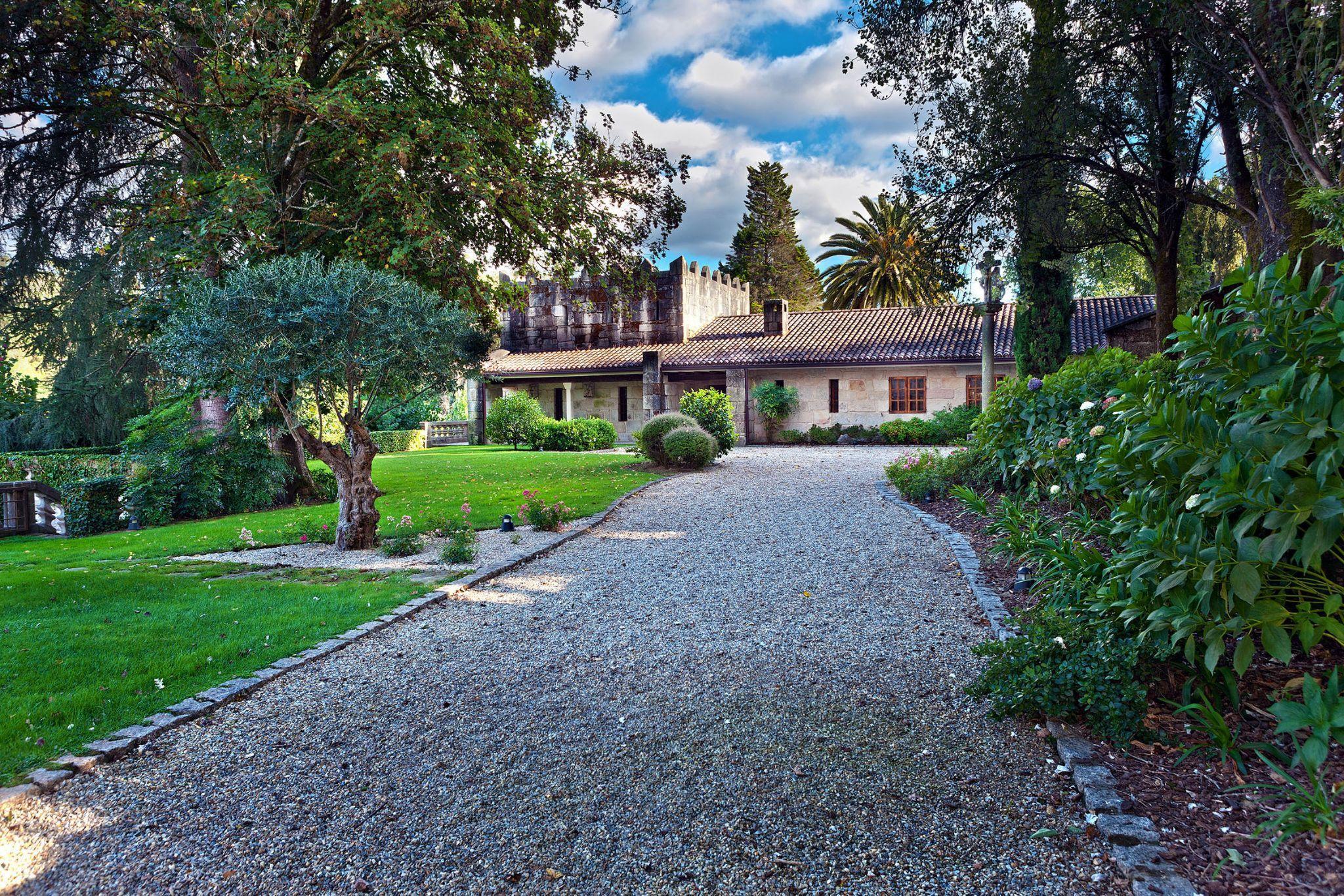
SINCE�2004
CLIMATE: Atlantic.Mildtemperatures,and abundantrainfallintheautumnandwinter months.
ELEVATION:�Upto492feet(150m)





SOILS: Graniteandalluvialwithriverstones. Sandyloamtexture.
KEY�FACTS HISTORY
VINE:� 124acres(50ha),dividedinto12 south-facingparcels.112acres(45ha)are GPEapproved.


KEY�VARIETAL:�100%Albariño
ECO: Committedto biodiversity, vineyardsareinterspersedwitholivetrees andgardens

INNOVATION: Pushingthelimitsof aginginAlbariño,encompassingañada winesthatshowcaseolderstyles
According to winery lore, 2,000 years ago, when the Romans first passed through the Fillaboa property they immediately knew the vines were special. Grapes have been specially cultivated here for generations, including for wines sent to the Pope. In the years that followed, illustrious tenants cared for the land, committed to preserving its magic. In 2001, the Masaveu family purchased Fillaboa and expanded the estate and its production.
SUSTAINABLE�VALUES
AtFillaboa,thenaturalworldsurroundsyou. In an effort to protect the groundwater and nearby rivers, Fillaboa developed a wastewater treatment plant that cleans and processes all water in the winemaking process. The winery uses ultraviolet light to eliminate possible microorganisms present in the water and a phytobacteria system to decompose viticultural treatment products through natural microbiological action Theytreatthewaterfortheirownusewithin the winery, but also to make sure any water that goes back into the ground is eliminatedofanypollutants.
THE�TEAM
Fillaboa is owned and operated by the Masaveu family, whotracetheirwinemakinghistorybacktotheirancestor Don Federico Masaveu Rivel who first owned vineyards in the mid-19th century in Catalunya. José Masaveu Herrero is the CEO of Masaveu Bodegas and has worked in the winesectorforover20years.
Isabel Salgado has been Fillaboa’s winemaker for almost 24 years and has been making Albariño wines for 28 years. With Albariño in her veins, she is driven by the the uniquely diverse terroir of Fillaboa and the magic of Galicia.
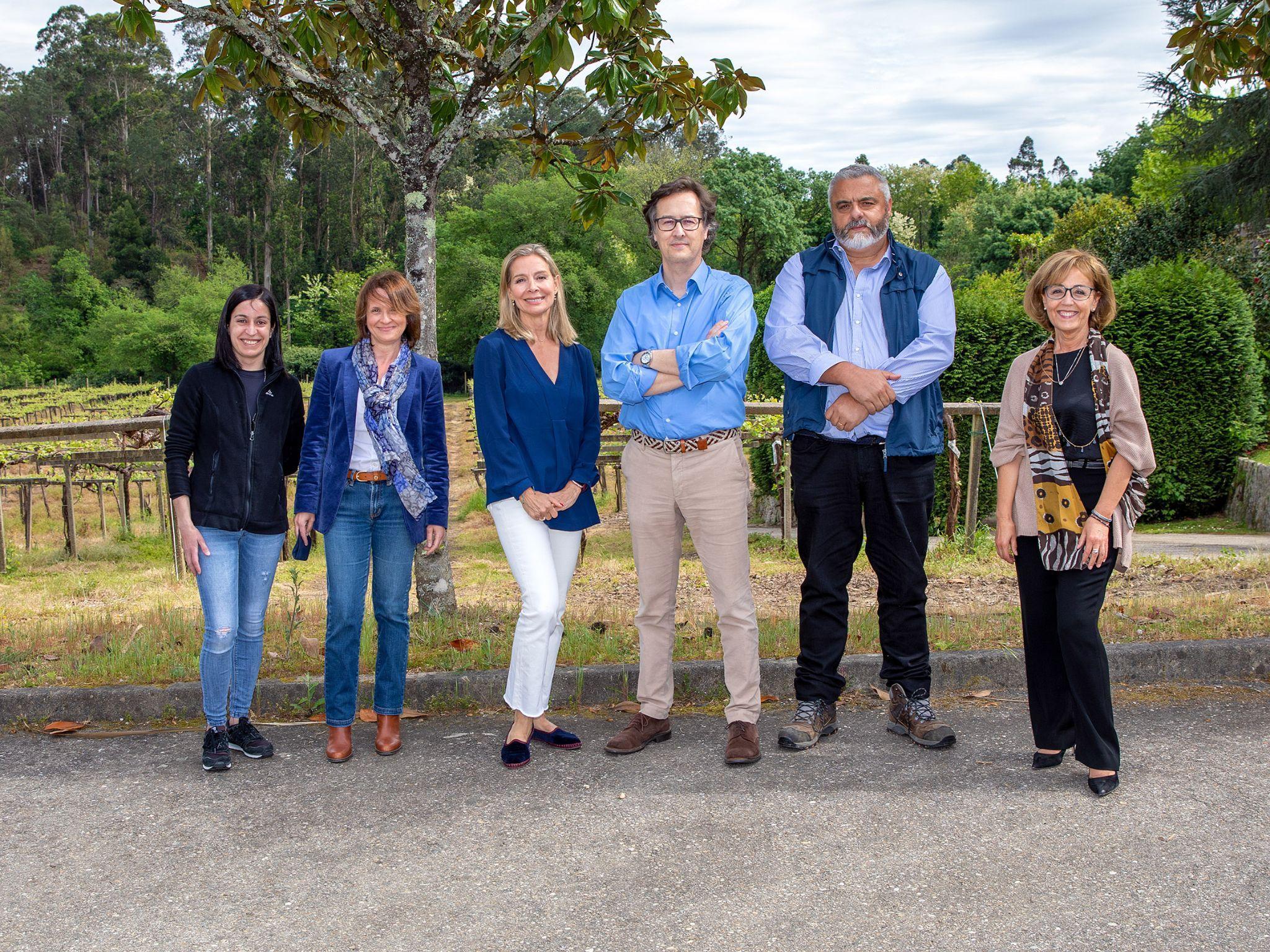


TERROIR




Fillaboa’s terroir is defined foremost by its rolling hills near the MiñoandTearivers,hometoarangeofanimallifeandvegetation including alluvial forests and Atlantic wet argan. Decomposed granite called xabre in Galicia predominate, with sandy loam texture and river stones throughout, producing exceptionally clean, aromatic wines. The acidic soils reinforce Albariño’s refreshingacidityandthesandycompositionfacilitatesdrainage.
An exhaustive soil study conducted in 2017 has enabled Fillaboa to identify and cultivate twelve distinctparcelstorealizetheirfullpotential.
Located in the Condado do Tea subzone of Rías Baixas, Fillaboa benefits from an Atlantic influence with abundant precipitation in autumn, winter and spring. While the fall and spring is temperate, summer temperatures can reach as high as 104°F (40°C) with ample diurnal temperature shifts. Due to the relatively higher temperatures of this subzone, Albariño has a distinct aromatic profile with pronouncednotesofstoneandtropicalfruits.

VITICULTURE�&�WINEMAKING


ALBARIÑO Bodega Fillaboa produces wine that expresses the subtlety and depth of their terroir. Albariño, the renowned native grape of Rías Baixas shows complex aromatics and beautifully structured acidity that make memorable, elegant wines.Fillaboaisfermentedinstainlesssteeltanksandagesonfineleesfor6months,lendingtextureandcomplexity.Due tothestrongbackboneofalcoholandacidity,Albariñoagesexceptionallywell,gainingdepthandcomplexityovertime.
ARTISANRY All wines are produced in small volumes from unique parcels and vinified separately, ensuring care and attention is maintained at every step. Operating with a philosophy of minimum intervention, they use only native yeasts in fermentation, the wines are not clarified and minimal doses of ascorbic acid and sulphur are the only products added. Due totheripenessofthegrapes,thewinesusuallydonotgothroughmalolacticfermentation.
FINCA MONTE ALTO TheprizedMonteAltoparcel,whichfeatures17acres(7ha)ofvineyardthatsitatthehighestpointof theestate,isespeciallynoteworthy.BenefittingfromastrongAtlanticcharacter,thisemblematicplotlies492feet(150m) abovesealevel.ProximitytotheMiñorivergivesthesoilasandy-loamtexturewithlotsofpebbles,idealforcultivation. The winesmadefromthisparcelareextremelylimited–Fillaboaproducedunder1,000caseslastyear.
Fillaboa trellises many of the vines with the traditional parra system, which elevates widely spaced vines up to 7 feet (2 meters) off the ground on traditional granite pillars, allowing air to circulate and preventing mold and rot from developing in the humid conditions.
FACT
Due to the unique combination of it’s mild Atlantic climate and well-drained soil, Fillaboa is an ideal site for the native Albariño to thrive.
How�is�the�terroir�reflected�in�the�wines� of�Fillaboa?
The Albariño cultivated in Fillaboa vineyards shows ripe fruit like pineapple and citrus, and balanced acidity when young. The Atlantic influence, southern hillside exposures, granitic and alluvial soils and lees-aging produce wines rich in substance that evolve and age without the intervention of oak. The acidity will continue to support the palate and the aromaticsforyearstocome.
Fillaboa prides itself on balanced wine. Foregoing any malolactic fermentation, the acidity instead balances the alcohol, producing exceptionally drinkable wines thatmaintaintheircomplexitywithage.



BODEGA�FILLABOA� PORTFOLIO:
Fillaboa Selección Finca Monte Alto, Fillaboa, Fillaboa 1898
Singularities�of�the�winery
Fillaboa is the largest estate in Pontevedra province, and contains one of the largest single extensions of vineyard in all of D.O. Rías Baixas. A rare example of achâteau-stylewineryintheregion.


Vinification



12 months on the lees in stainless steel tanks
Good�to�know
Limited production, aging potential of 5-8 years
from 18-31 years. Aging potential up to 3 years
Contact:�Teresa�Muñoz
tmunozv@bodegas.masaveu.com
An historic wine estate, Abadia Retuerta is located in Sardon del Duero on the site of the 12th Century Abbey of Santa María de Retuerta, fully restored and converted into an exclusive 5-star hotel and wellness retreat, complete with a 1-star Michelin restaurant. The property comprises 1,717 acres (695 ha), of which 475 acres (192 ha) are planted on the left bank of the Duero River. With 900 years of winemaking at this storied place, the winery has earned worldwide recognition for terroir-driven winemaking.



SINCE�2010
KEY�FACTS HISTORY
CLIMATE: Continentalextreme:lowrainfall coldwinters,hotsummersoffsetbyhigher elevationandtemperaturevariation
ELEVATION:�2,460feetto2,790feet (760to850m)





SOILS: SandyclosertototheDueroRiver, withwhiteclayonthehillsides,deepgraveland limestoneinselectparcels
CLASS: DOPAbadíaRetuerta
VINE: 475acres(192ha)across54 parcels

KEY�VARIETALS:�Tempranillo, Syrah, Cabernet Sauvignon, Petit Verdot, Garnacha, Sauvignon Blanc, Verdejo, Godello

ECO: Willbefullycertifiedorganicin 2024.Somebiodynamictrials

INNOVATE: Climatechangemitigation managementprojectunderway,basedon understandingnatureandterroir
Santa María de Retuerta was an ancient working estate at its inception in 1146, where monks continued the traditions of vine-growing and winemaking. Sold directly by the monks, 17th century documents show Abadia Retuerta was the dominant wine at the largest regional market in Valladolid.

The vineyards were largely uprooted under private ownership in the 1970’s. Bought by Sandoz corporation in 1988, they recognized the unique viticultural potential and collaborated with French winemaker Pascal Delbeck to restore the estate, its vineyard and original landscape. He designed the current winery which was built in 1996. Ángel Anocíbar, current director of viticulture and oenology, joined the team that same year.

Good�to�Know: Abadía Retuerta’s CSR practices include generating employment, boosting the local economy and promoting sustainable tourism. An annual Corporate Social Responsibility Report is published under the criteria established by the Global Reporting Initiative (GRI).

Winemaker Pascal Delbeck (Château Belair, Ausone) have collaborated since 1996 to identify 54 distinct parcels, distinguished by unique soil composition, variety,andexposure.

Affectionately known as "Professor Bacterio” for his obsession with quality and microbiological control of wines, Ángel is responsible for both the vineyard and cellar. This allows for methodical work and steady progress each year in understanding their terroir and howitisexpressedintheirwines.

TERROIR


The Duero River is a defining feature of the Abadia Retuerta terroir, with poor, sandy soils at the lower part of the estate and white clay and limestone deposits on the hillsides. Extreme winters and summer temperatures with limited rainfall are offset by elevation and cooling influences from the meseta, making it one of thebestterroirstoconfrontclimatechange.
Intensive studies have isolated 54 parcels based on unique soils, exposures, and suitability to different varieties. 4 parcels, Pago Valdebellón (Cabernet Sauvignon), Pago Negralada (Tempranillo), Pago Garduña (Syrah) and PV (Petit Verdot), show particular terroir character andarebottledassingle-vineyardwines.


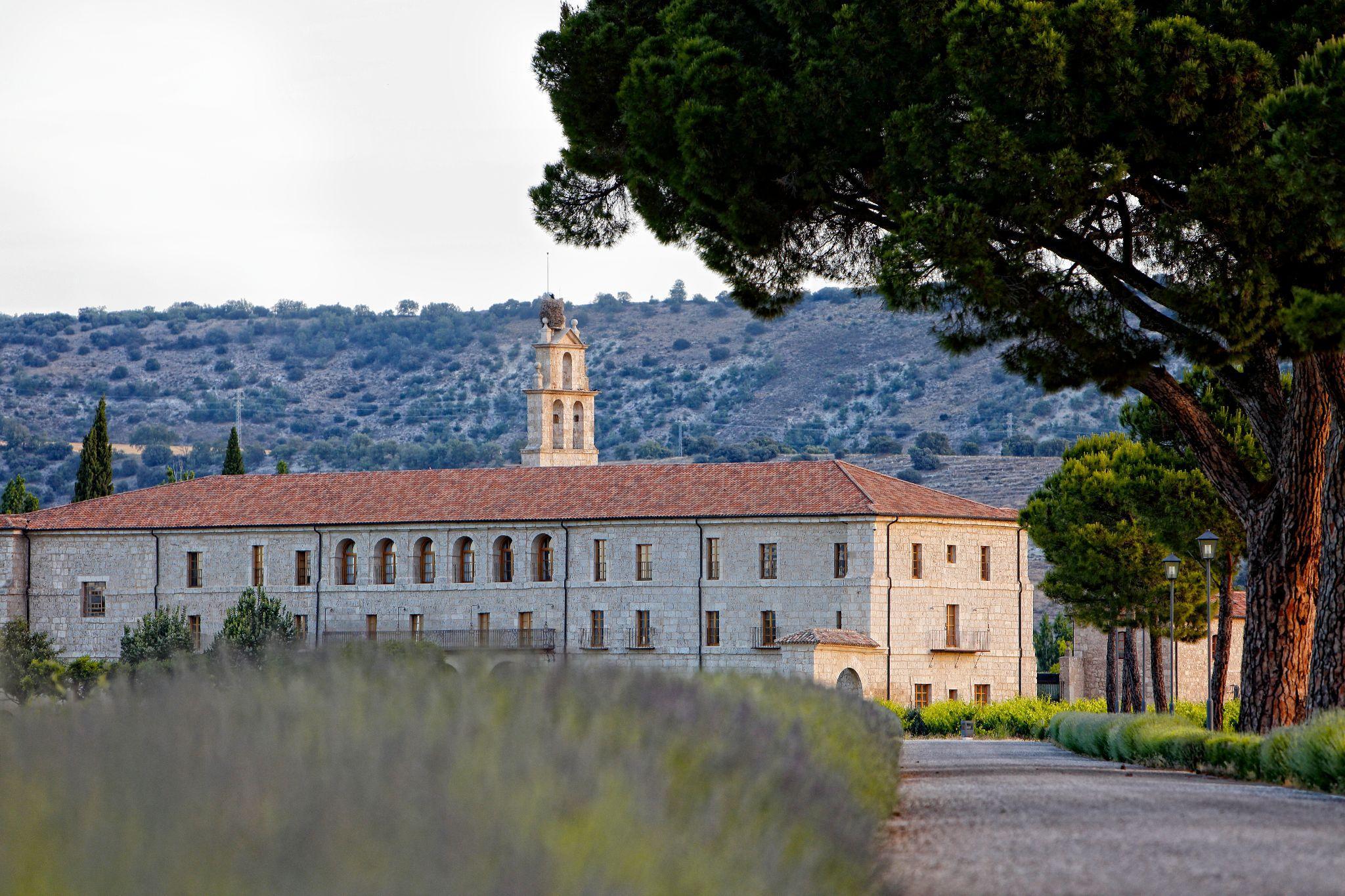

VITICULTURE�&�WINEMAKING

EXPERIMENTATION In the 90s, Abadía Retuerta began to study and recognize the effects of climate change. Varieties that could fare well and be blended with their flagship Tempranillo, like Touriga Nacional, Garnacha and others were planted. The longer cycle of these varietals preserve acidity, and are better adapted to heat and dry environments. They also found an ancestral, pre-phylloxeric variety of Tempranillo surviving in their pine forests. These vines had managed to overcome frosts, fogs, droughts, diseases and are thus adapted specifically to Abadía Retuerta. Those vines are currently being recovered and propagated and will be called Tempranillo Abadía Retuerta.

MICRO-VITICULTURE AND MICRO-VINIFICATION All 54 parcels are independently cultivated, hand-harvested and selected at sorting tables and vinified separately to preserve terroir identity. Native yeast is used for alcoholic fermentation and natural bacteria for malolactic. They practice minimal intervention and adapt all winemaking practices to respond to the nuance of each vintage.
GRAVITY FLOW WINEMAKING The estate’s patented vinification method makes use of gravity in order to achieve a more natural, delicate handling of the grapes, careful to maintain the character of each variety. This follows their general winemaking philosophy, which is driven by the desire to harvest at the right moment to maintain a natural acidity that brings freshness, balance, and fineness of tannins.
Therearemorethan25red and white grape varieties plantedinAbadíaRetuerta’s experimental plots. They willbestudiedovertimeto see how they adapt to the terroir and changing climateconditions.
How�is�the�terroir�reflected�in�the� wines�of�Abadía�Retuerta?
Soils are extremely varied, which allows Abadía Retuerta to maintain homogeneity and consistency in the vintages. The wines show balsamic aromas, almost menthol from the surrounding scrubland, rockrose,aromaticherbs,andpines.
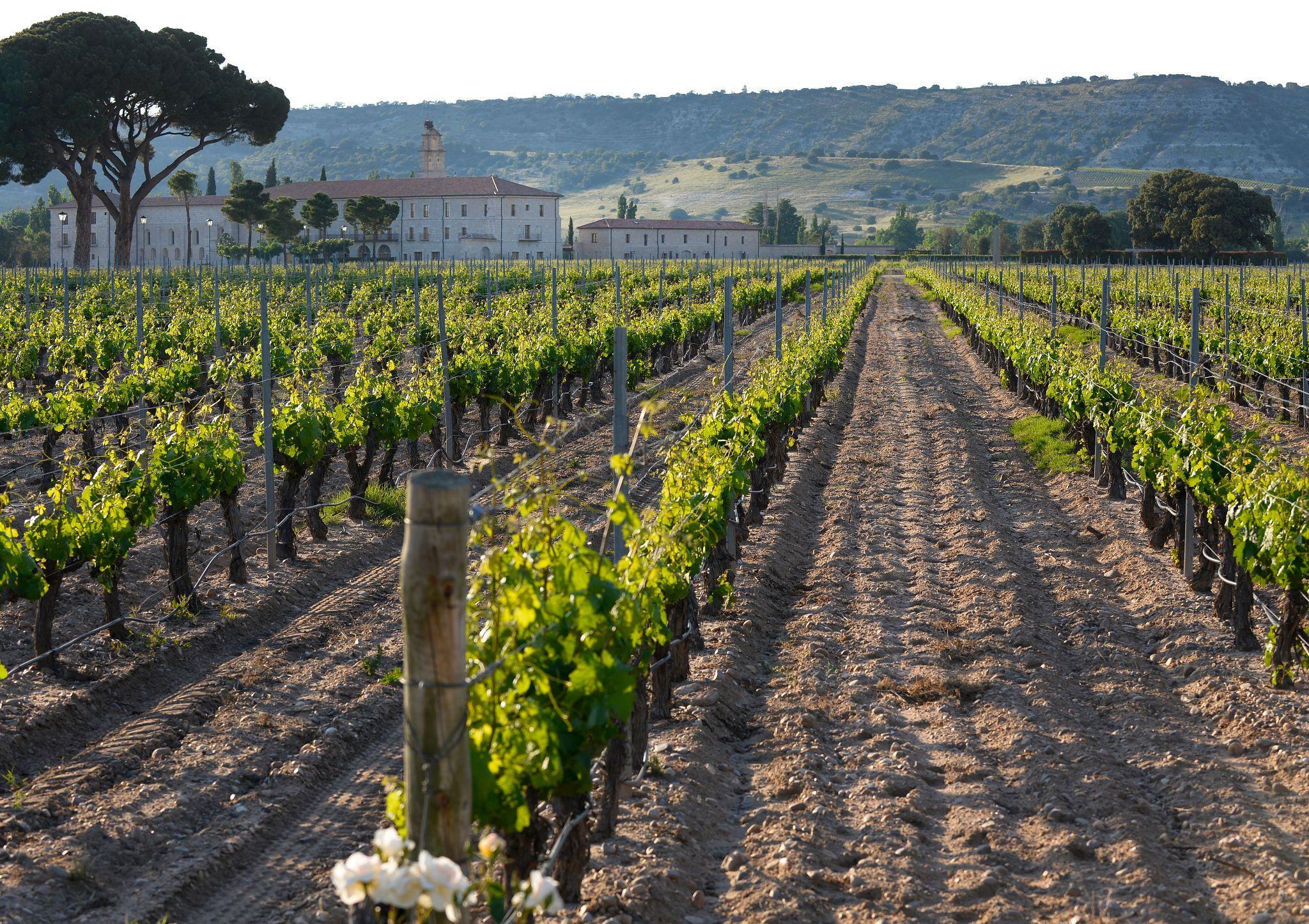
The dry continental climate makes for deep complexity in mature fruit that yield wines of color andconcentration.

Delbeck and Anocíbar carried out an extensive study of climate and soils, revealing a great diversity of microclimates and soils within the farm. The farm is divided into 54 different plots depending on: soil composition,variety,andexposure.
ABADÍA�RETUERTA
PORTFOLIO:�Abadia Retuerta
Selección Especial; Pago
Negralada; Pago Garduña; Pago
Valdebellón; Petit Verdot; Blanco

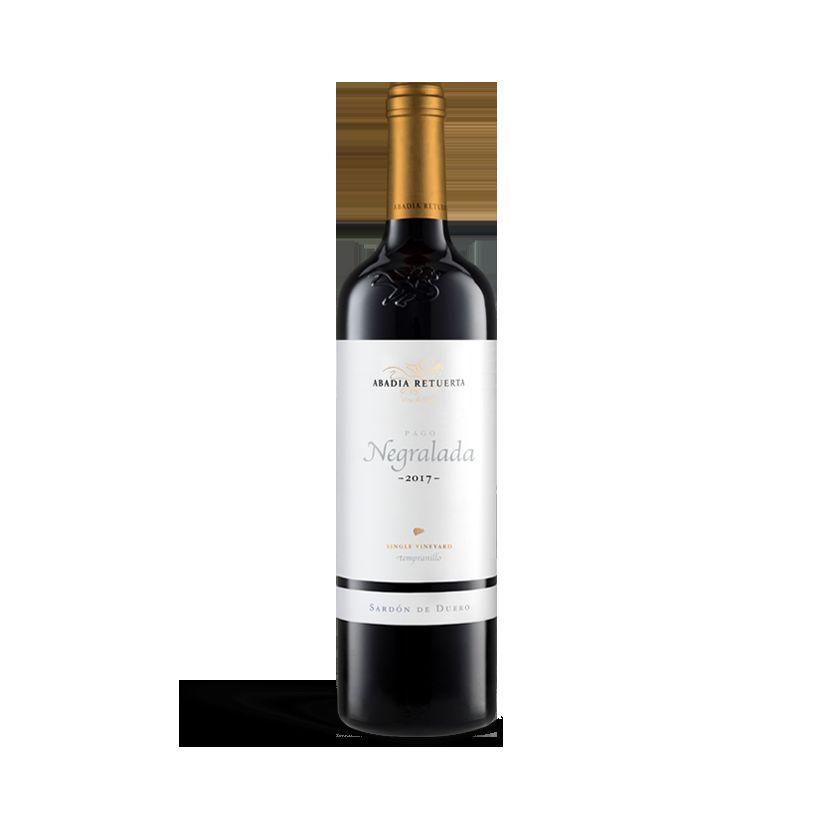
LeDomaine; Cuvée Palomar
Pago�Negralada�
The Terroir of the 4 most singular plots (Negralada, Garduña, Valdebellón, and Petit Verdot) are the perfectbalanceofsoil,microclimate,andvariety.
Singularities�of�the�winery
Abadia Retuerta is one of the oldest wineries in Spain, and in Europe. Today, the 12th century abbey is a also designated National Patrimony site, and home to a five-star hotel with luxury spa and one-star Michelin restaurant, Le Domaine.
Why�is�Abadía�Retuerta�a�Grandes� Pagos�de�España�winery?
GPE provides the support to Abadia Retuerta’s in its mission to recover the historical splendor of this estate,
16 months French oak
Pure Tempranillo from the Duero. Deep gravel soils with sand on the surface. Distinctive firm, tannic character.
Selección�Especial
DOP Abadía Retuerta
Varieties�(2018�vintage)
77% Tempranillo, 12% Cabernet Sauvignon, 9% Syrah, Merlot, Petit
ABADíA�RETUERTA



Monastery of Santa María de Retuerta 47340 Retuerta
12 months American and French
Valladolid ABADIA-RETUERTA.COM
Mainly Tempranillo with other varieties. A signature blend with

Abadía Retuerta
DOP
����@ABADIARETUERTA�
Contact:�Álvaro�Pérez�Navazo� a.perez@abadia-retuerta es
















































